When it comes to running a game of D&D, being prepared can be half the battle. Notes, maps, and ready-made encounters are all great things to prepare ahead of time so you have more brain space to have fun during the session!
One of the most effective uses of prep time is preparing a map for when the time comes to cross swords, hurl fireballs, or stealthily explore the given environment. Let’s review some steps to go through to prepare a session using the D&D Beyond's Maps VTT.
- Step 1: Manage Your Menagerie of Monsters
- Step 2: Map Quest
- Step 3: Discoveries Around Every Turn
- Step 4: Enter the PCs
- Step 5: Something Lurks in the Fog
- Step 6: Take the Initiative
Step 1: Manage Your Menagerie of Monsters
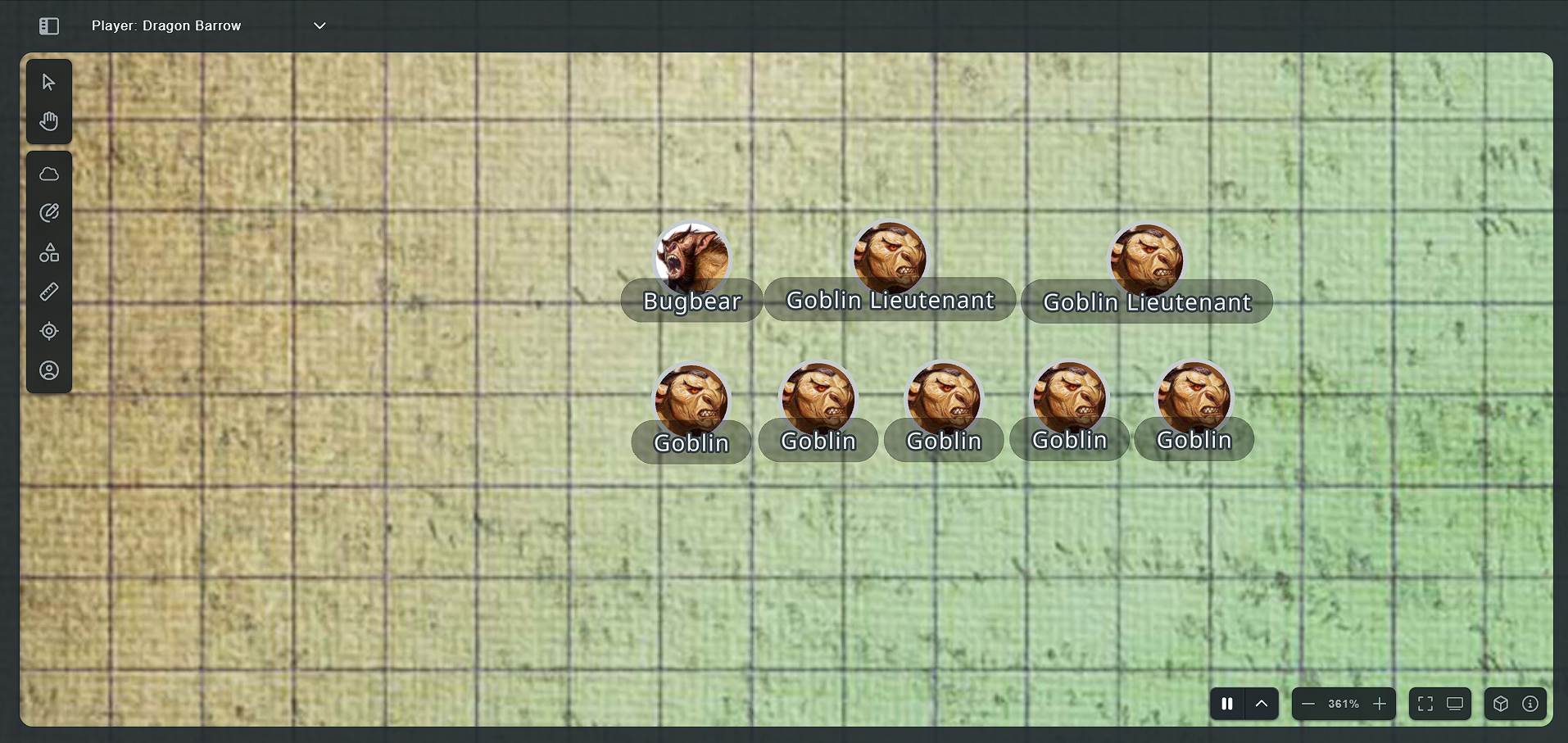
A good starting point for your sessions is building out the list of monsters your characters will be encountering. A good rule of thumb I like to use is:
- One Leader. This monster will have the highest CR, flashy abilities, and a lot of personality. This is the monster that is running the show and typically the one the player characters will be there to deal with.
- One to Two Lieutenants. These will have a lower CR than the leader, fewer abilities, and won’t be as fleshed out personality-wise. Their role is to protect the leader, standing as a barrier between the party and their target.
- A Variety of Minions. These stand between the party and the lieutenants. They are quick and simple to run and usually fit into a certain archetype. Some minions may be scouts with high Wisdom and Dexterity, and others might be bruisers with high Strength and Constitution. They’re also the monsters I may change out once I’ve picked the map, as a different type of monster might suit the environment better.
With my selection of monsters picked out, using the guidelines in the Combat Encounter Difficulty section of the 2024 Dungeon Master’s Guide, it's now a great time to get the map for the session set up!
Step 2: Map Quest
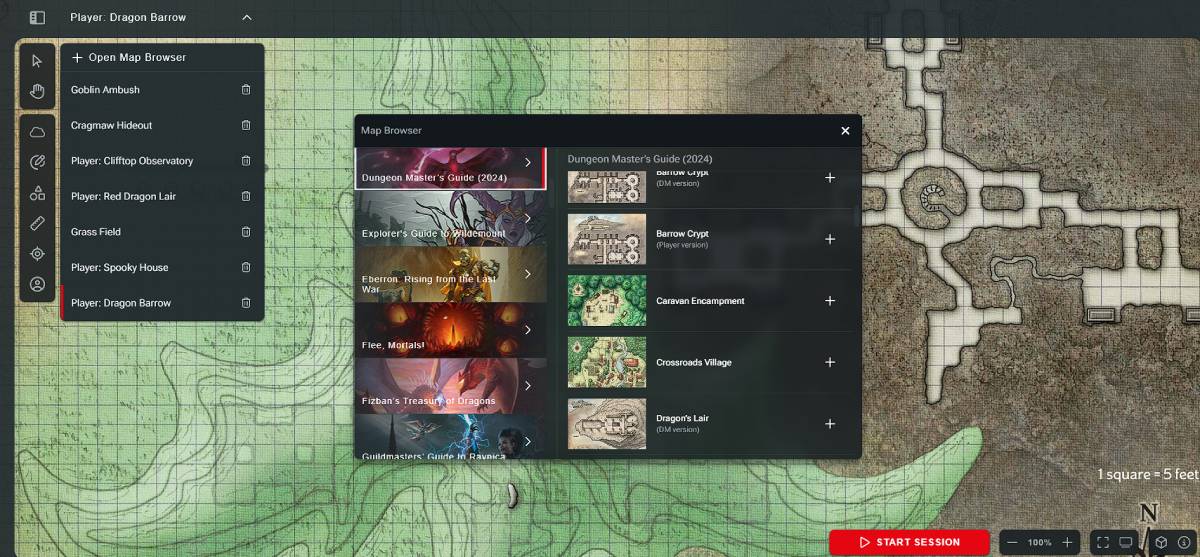
Regardless of how you run your session, be it "theater of the mind," using a virtual tabletop such as D&D Beyond’s Maps tool, or using paper maps and minis, the map itself can be a crucial part of your session. It dictates the environment the players will have to navigate, what advantages the enemies may have, and even what hazards may be present.
If you already have a map picked out–maybe one you’ve made yourself–you can load it into Maps using the import tool that helps you quickly scale your map. However, if you’re looking for a ready-to-use map, Maps has you covered.
Maps integrates with your digital D&D library, allowing you to access a plethora of maps from official and third-party books. Many of these books include a wide selection of generic maps not tied to a specific adventure, so they are perfect if you’re looking for just the right map for your encounter.
Here is a list of my top picks for books that have a good selection of generic maps:
- 2024 Dungeon Master’s Guide - Appendix B: Maps
- Eberron: Rising from the Last War - Chapter 4: Building Eberron Adventures
- Fizban’s Treasury of Dragons - Chapter 5: Draconomicon
- Guildmaster’s Guide to Ravnica - Chapter 4: Creating Adventures
- Bigby Presents: Glory of the Giants - Chapter 4: Giant Enclaves
- Mythic Odysseys of Theros - Chapter 4: Creating Theros Adventures
Once you’ve found that perfect map, you’re ready to move on to the next step, adding hazards and other information to discover!
Step 3: Discoveries Around Every Turn
Often, the environment itself can be as dangerous as any enemy found within, so my third step in preparing for a session is to mark out all the hazards and perils the players might face. Chapter 3 of the 2024 Dungeon Master’s Guide includes lots of ideas for various environmental effects, hazards, and traps, all wonderful for turning your map into a veritable death trap.
It's also important to mark any hidden information that players can discover, like clues, loot, or secret doors.
With a delightful selection of surprises picked out, marking them on the map is the next thing I do. When using a VTT, I add these hidden things in various ways. Sometimes, adding an Overlay and hiding it is all I need. Other times, I’ll add tokens and adjust their name tags to remind me of what element entails.
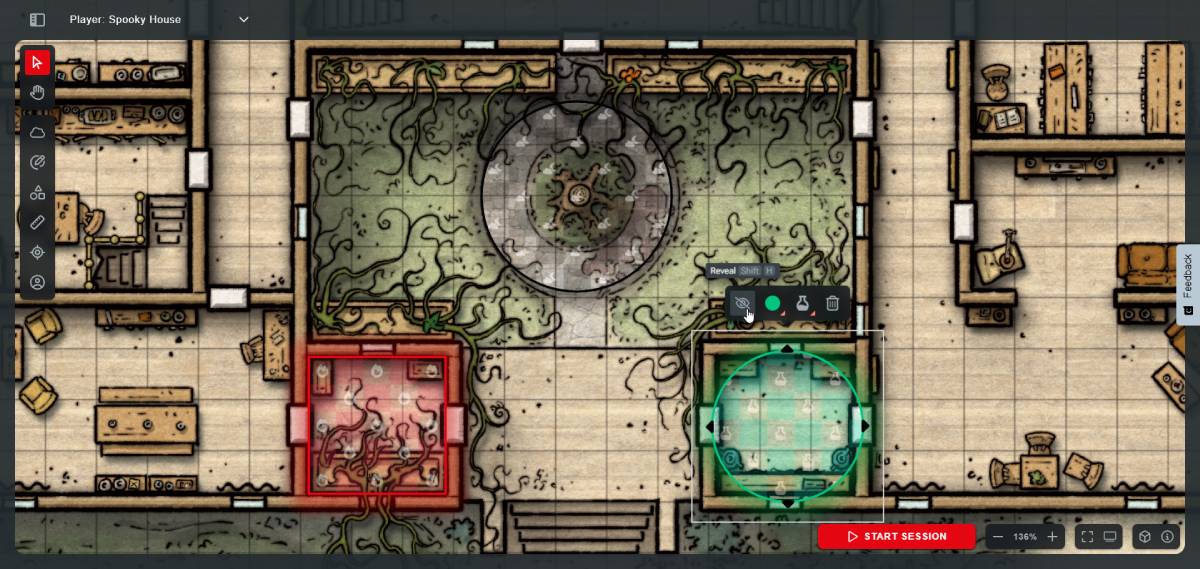
In the above example on the Maps VTT, I’ve placed a fire trap in the left-hand room. The right-hand room is filled with poisonous gas, and the tree to the north has an aura of Darkness surrounding it that is triggered when a creature approaches. All of these areas have been marked using the Overlay tool, and then hidden with the context menu so they’re only visible to the DM.
Step 4: Enter the PCs
With the various hazards and perils all planned out, now is the time to determine where your players will enter the scene. This is a surprisingly important step because it can set the tone for the entire encounter. We’ll use two different maps from Eberron: Rising from the Last War–Nightclub and Sharn Heights–to demonstrate this.
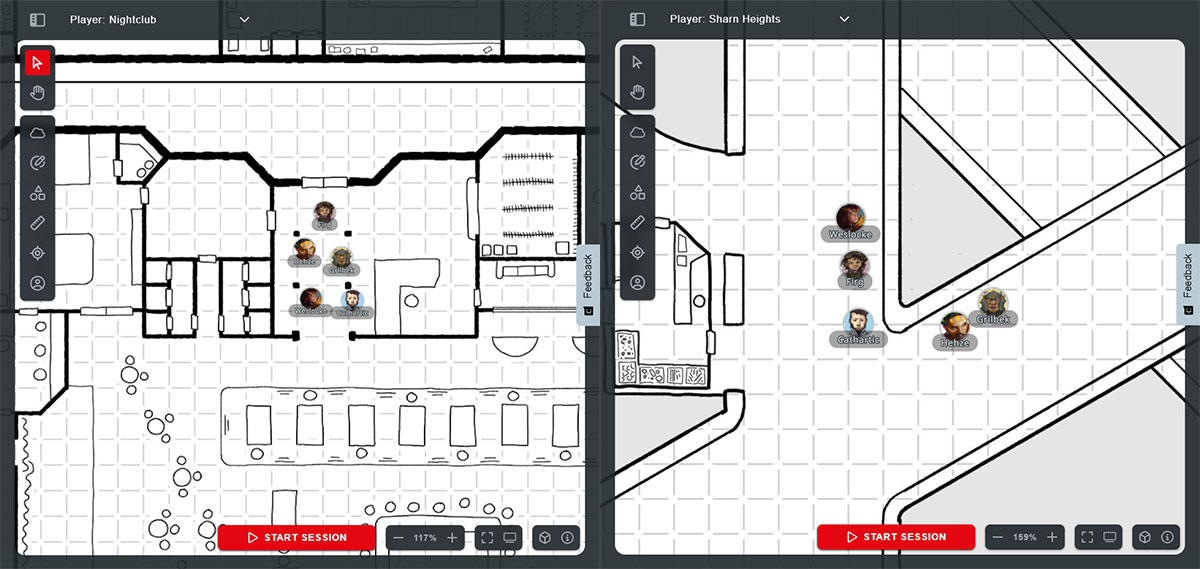
In the Nightclub map on the left, the players enter from the front door into a cloakroom-slash-front desk. The rest of the club opens up through the arc to the south, putting them in a position of exploration while they're also being monitored. They’ll know they have to move carefully as they are not in control of the environment.
Conversely, the Highway map on the right places the players directly in control as they look down from one road onto a lower one below. They are in a position to get the drop on the enemy–literally and figuratively–placing them in a position of control over the encounter.
Consider carefully what options you give your players for entering the encounter, as this can vastly affect its dynamics. The most obvious effect it has is what the players can see when the encounter begins. Speaking of sight...
Step 5: Something Lurks in the Fog
Fog of war is an invaluable tool for managing your session, both incentivizing exploration from your players and also giving enemies an upper hand. Once you have determined the starting point of your players, you can begin setting up the fog of war.
If you’re using D&D Beyond’s Maps tool as your virtual tabletop, you’ll first fill in the whole map using the “Cover All” option. Then, once you’ve done that, erase the fog in the area where the players are starting.
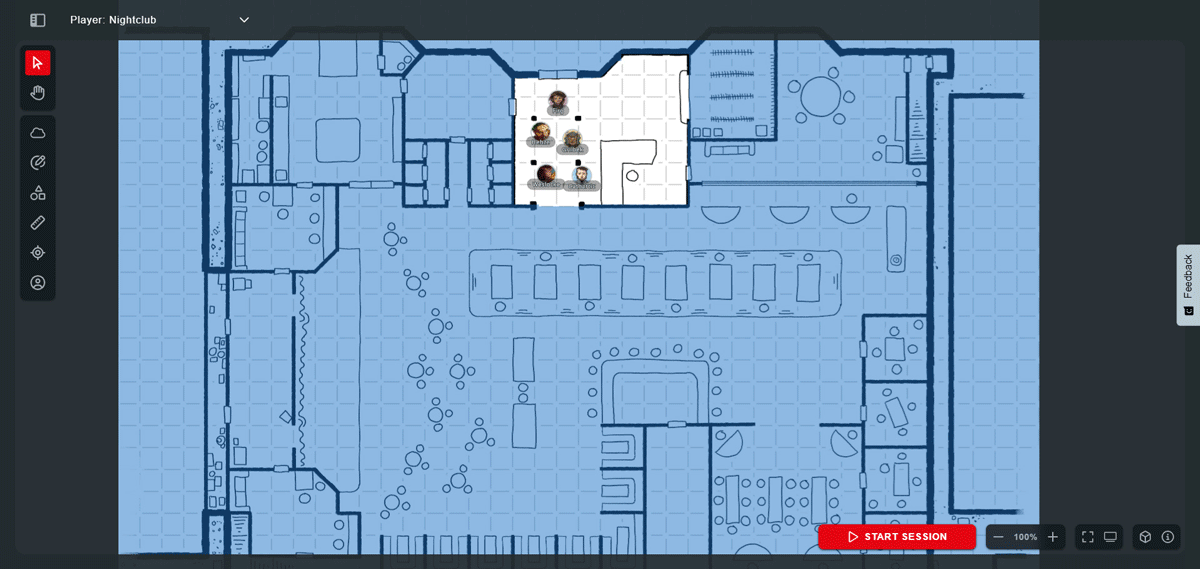
Next, you’ll want to visualize the lines of sight the party has out of that area and reveal those areas as well.
With the initial fog of war set up now comes the fun part: what lurks in the fog. Having enemies ready to get the drop on the players can create very dramatic and exciting moments. You can conceal enemies using fog of war, as well as the Hide option from the context menu.
Step 6: Take the Initiative
So you’ve got the perfect map, and it's filled with some hazards to surprise the characters; we've placed the characters in their starting position, fog of war is active, and enemies lie in wait. Now, it’s time to get ready for combat. With D&D Beyond’s Maps tool, this can be done with two clicks: First, open the sidebar to access the Combat Encounter menu, then click "Add All Tokens."
At this point, your session is ready to go, with the only remaining step being to roll Initiative if and when combat breaks out! You can navigate away from this map and return to it when the fun begins, and everything will be waiting for you, ready to go.
Prepare for Success
Hopefully, with these tips, combined with the time-saving features available in D&D Beyond’s Maps VTT, you can streamline your session prep, freeing up mental space so you can have more fun in your sessions!
Your time as a Dungeon Master is valuable, so getting the most out of it is important, and using the right tools for the job is a key part of that.
However, if there is one piece of advice I’d give above all others when it comes to DM prep, it would be this: Only prep as much as you need or as much as you enjoy; anything beyond that is not the best use of your valuable time. And don’t be afraid to improvise! You can always reach for your 2024 Dungeon Master’s Guide or Monster Manual for some quick inspiration for an ad hoc encounter.

Davyd is a moderator for D&D Beyond. A Dungeon Master of over fifteen years, he enjoys Marvel movies, writing, and of course running D&D for his friends and family, including his daughter Willow (well, one day). The three of them live with their two cats Asker and Khatleesi in south of England.








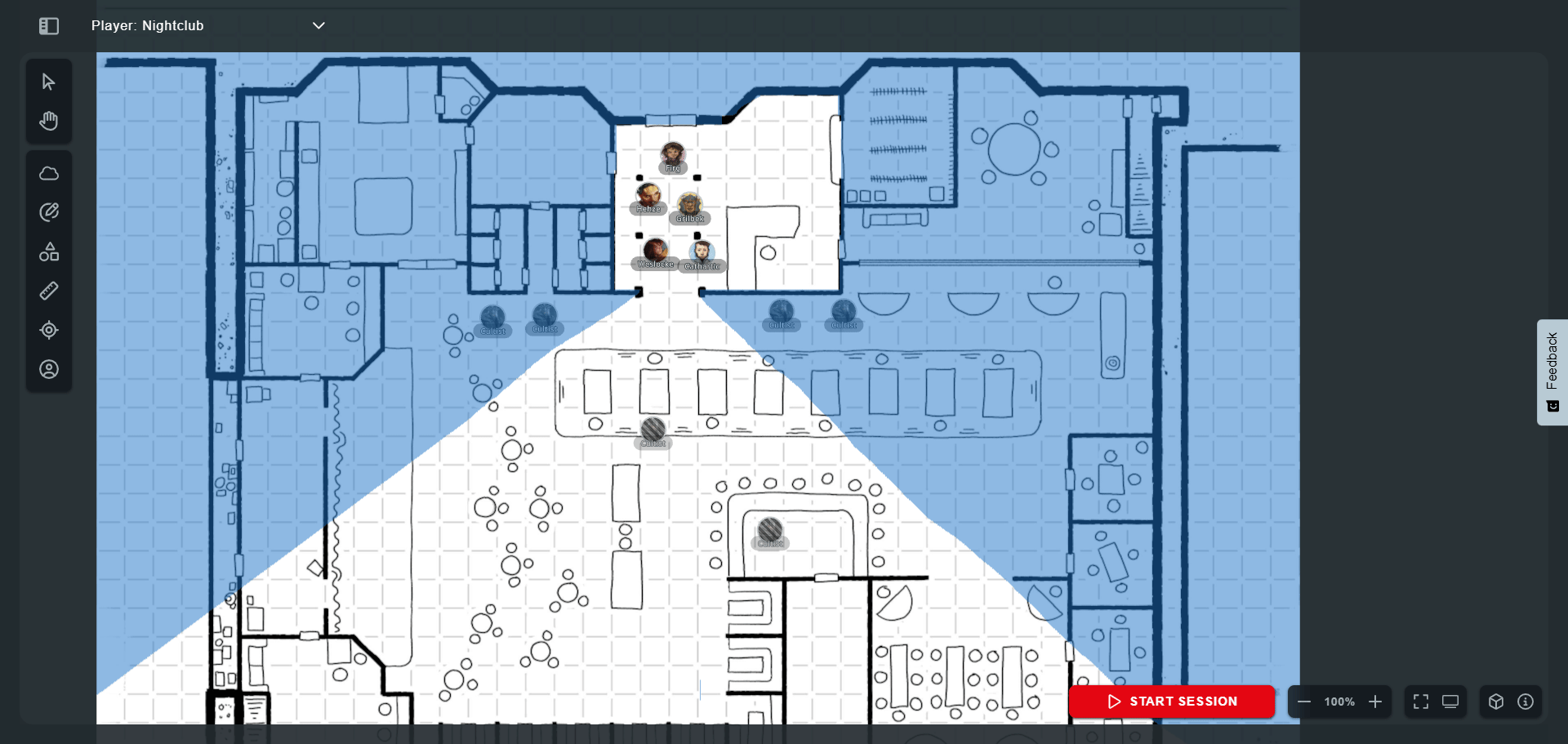
-
View User Profile
-
Send Message
Posted Nov 22, 2024An NPC tracker is a more useful feature than a line of sight. When the MM releases, take the NPC Tracker sheet from the DMG and populate it with stat blocks and simple notes from MM, put in a name and picture, and let me see it like my characters throw their tokens into maps. Now, we'd be cooking with fire.
-
View User Profile
-
Send Message
Posted Nov 22, 2024For your step 5, actually it took alot of time just to remove the fog of war with the brush.... We need a tool to select an area to remove the fog of war...
-
View User Profile
-
Send Message
Posted Nov 23, 2024I love this system so far. The only downside is missing stat blocks for monsters. I have to have a second tab open to the old encounter building, or I have to have the actual book out to flip back and forth between monsters.
-
View User Profile
-
Send Message
Posted Nov 23, 2024I love it. Great work!
-
View User Profile
-
Send Message
Posted Nov 23, 2024I'm curious too. I really like encounter builder's simplicity. I hope it doesn't die.
-
View User Profile
-
Send Message
Posted Nov 23, 2024why cant they just combine stuff (encounter builder, maps, sheet, etc) Above VTT does a great job of integration and that's fan made
-
View User Profile
-
Send Message
Posted Nov 24, 2024If you can include Dynamic lighting with individual token views like Roll20 then I think it could be worth it but without being able to place walls and create active LOS vision, its a hard sell from Roll20.
-
View User Profile
-
Send Message
Posted Nov 24, 2024Adoption rate is still low because so far you guys haven't made dynamic lighting a priority -- it's a game changer for GMs who already have too many manual things to control
-
View User Profile
-
Send Message
Posted Nov 24, 2024I really like maps but I wish the fog of war was automated.
-
View User Profile
-
Send Message
Posted Nov 26, 2024I totally agree. I don't game online & have no need for VTT or any other online tool. I use the encounters tool for my table top (the way D&D should be played, btw) as a quick list for the monsters & adversaries the players will encounter during an adventure. Very handy to have & I'd hate for it to go away for something "more useful for online play".
-
View User Profile
-
Send Message
Posted Nov 27, 2024Token Drag Distance
Does anyone else find the lack of distancing displayed when you drag tokens a significant stumbling block?
As it stands, I have to switch to Measuring Mode and drag a line from my token to where I think I want to move it. Then, try to remember exactly where the token will end up. Switch back to token movement mode, select the token, and drag it to the rough location where I measured it would end up. It's painful.
A simple distance measurement when you move a token would solve this. Or snap to the grid I guess.
Play By Post
I'd also really like to use Maps for my PbP games, but they don't stay "live" when I leave the browser as DM. This makes this tool utterly inappropriate for that use case. That's a shame, but I guess PbP is not the intended audience for this tool.
-
View User Profile
-
Send Message
Posted Nov 28, 2024That's actually a great recommendation for functionality. I hadn't thought of having the ability to have a measurement as you move a player/npc token. That would be a huge quality of life improvement.
-
View User Profile
-
Send Message
Posted Nov 28, 2024Podrian implementar algo como en FG del chat con los lenguajes de dnd para quien hable elfico si quieres que el solo se entere de algo que esta en elfico se escriba en el chat y se traduzca a ese idioma y el jugador lo lea correctamente traducido pero los que no posean ese idioma lo lean en elfico
-
View User Profile
-
Send Message
Posted Nov 28, 2024I agree 100%. Hopefully this is something they are working on, so that you really do have an everything included or an All-in-one map system.
-
View User Profile
-
Send Message
Posted Nov 28, 2024Will we get or eventually get tokens to properly line up to the map grid square for square and the tokens to automatically have its own LoS instead of having to manually erase the fog to make it more immersive to each character/player who may or may not have dark vision?
-
View User Profile
-
Send Message
Posted Nov 30, 2024When do you expect to have the ability to track HP on monsters in encounters?
-
View User Profile
-
Send Message
Posted Nov 30, 2024I would like to see the ability to lock the POV to what the DM is looking at. In an in-person game, I use a TV for the player's POV, and I keep switching between what I'm seeing and what the players are seeing, having to move the POV twice.
-
View User Profile
-
Send Message
Posted Nov 30, 2024The one thing holding me back from switching from other VTTs to this is the lack of dynamic fog. I never want to have to polygon reveal ever again, but being able to load maps & tokens directly is pretty damn cool. Sort it out will ya?! :)
-
View User Profile
-
Send Message
Posted Dec 3, 2024Maps tool
Prep made easy
-
View User Profile
-
Send Message
Posted Dec 5, 2024i think the only addition i think would be awesome would be dynamic fog of war, that moves as the tokens move using player-selected wall outlines or something like that. fog of war in this is too slow to use, I feel it takes away from the experience. especially because you need a master tier subscription for maps, we should get more than bare minimum for a subscription.
but I'm glad it at least works now.